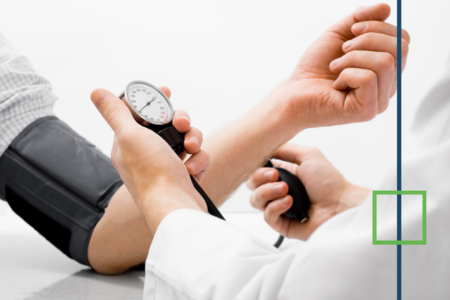What is Dual Diagnosis?
A person with a dual diagnosis has both a mental disorder and an alcohol or drug problem. These conditions occur together frequently. About half of people who have a mental disorder will also have a substance use disorder at some point in their lives and vice versa. The interactions of the two conditions can worsen both. [1]
What are the Signs that Someone Needs a Dual Diagnosis Treatment?
Because many combinations of dual diagnoses can occur, symptoms vary widely. Mental health clinics are starting to use alcohol and drug screening tools to identify people at risk. [2] Symptoms of substance use disorder may include:
- Withdrawal from friends and family
- Sudden changes in behavior
- Engaging in risky behaviors
- Developing a high tolerance and withdrawal symptoms
- Feeling like you need a drug to be able to function
Symptoms of a mental health condition can also vary greatly. Warnings signs, such as extreme mood changes, confused thinking or problems concentrating, avoiding friends and social activities, and thoughts of suicide, maybe reasons to seek help.

Dual Diagnosis Warning Signs
Each illness has its own symptoms, but common signs of mental illness in adults can include the following:
- Excessive worrying or fear
- Feeling excessively sad or low
- Confused thinking or problems concentrating and learning
- Extreme mood changes, including uncontrollable “highs” or feelings of euphoria
- Prolonged or strong feelings of irritability or anger
- Avoiding friends and social activities
- Difficulties understanding or relating to other people
- Changes in sleeping habits or feeling tired and low energy
- Changes in eating habits such as increased hunger or lack of appetite
- Changes in sex drive
- Difficulty perceiving reality (delusions or hallucinations, in which a person experiences and senses things that don’t exist in objective reality)
- Inability to perceive changes in one’s own feelings, behavior or personality (”lack of insight” or anosognosia)
- Overuse of substances like alcohol or drugs
- Multiple physical ailments without obvious causes (such as headaches, stomach aches, vague and ongoing “aches and pains”)
- Thinking about suicide
- Inability to carry out daily activities or handle daily problems and stress
- An intense fear of weight gain or concern with appearance

Substance Use Disorders
As a country, we have a serious substance misuse problem — the use of alcohol, illegal drugs, and/or prescribed medications in ways that produce harm to ourselves and those around us. These harms are significant financially with total costs of more than $420 billion annually and more than $120 billion in healthcare. But these problems are not simply financial burdens — they deteriorate the quality of our health, educational, and social systems, and they are debilitating and killing us — particularly our young through alcohol-related car crashes, drug-related violence, and medication overdoses.
What are the Causes of Dual Diagnosis?
Although these problems often occur together, this does not mean that one caused the other, even if one appeared first. In fact, it can be hard to figure out which came first. Researchers think that there are three possibilities as to why they occur together:
- Common risk factors may contribute to both mental disorders and substance use disorders. These factors include genetics, stress, and trauma.
- Mental disorders can contribute to drug use and substance use disorders. For example, people with mental disorders may use drugs or alcohol to try to feel better temporarily. This is known as self-medication. Also, mental disorders may change the brain to make it more likely you will become addicted.
- Substance use and addiction can contribute to the development of a mental disorder. Substance use may change the brain in ways that make you more likely to develop a mental disorder.
Genetic, brain imaging and neurobiological science suggest that “addiction” is qualitatively different from substance use and is now best understood as an acquired chronic illness, similar in many respects to type 2 diabetes — illnesses that can be managed but not yet cured. [3]
A “substance” is defined as any psychoactive compound with the potential to cause health and social problems, including addiction. These substances may be legal (e.g., alcohol and tobacco); illegal (e.g., heroin and cocaine); or controlled for use by licensed prescribers for medical purposes such as hydrocodone or oxycodone (e.g., Oxycontin, Vicodin, and Lortab). These substances can be arrayed into seven classes based on their pharmacological and behavioral effects:
- Nicotine — cigarettes, vapor-cigarettes, cigars, chewing tobacco, and snuff
- Alcohol — including all forms of beer, wine, and distilled liquors
- Cannabinoids — Marijuana, hashish, hash oil, and edible cannabinoids
- Opioids — Heroin, methadone, buprenorphine, Oxycodone, Vicodin, and Lortab
- Depressants — Benzodiazepines (e.g., Valium, Librium, and Xanax) and Barbiturates (e.g., Seconal)
- Stimulants — Cocaine, amphetamine, methamphetamine, methylphenidate (e.g., Ritalin), and atomoxetine (e.g., Stratera)
- Hallucinogens — LSD, mescaline, and MDMA (e.g., Ecstasy)
About Mental Illness
Mental health and substance use disorders affect people from all walks of life and all age groups. These illnesses are common, recurrent, and often serious, but they are treatable and many people do recover. Mental disorders involve changes in thinking, mood, and/or behavior. These disorders can affect how we relate to others and make choices. Reaching a level that can be formally diagnosed often depends on a reduction in a person’s ability to function as a result of the disorder. For example:
- Serious mental illness is defined by someone over 18 years old having (within the past year) a diagnosable mental, behavior, or emotional disorder that causes serious functional impairment that substantially interferes with or limits one or more major life activities.
- Substance use disorders occur when the recurrent use of alcohol and/or drugs causes clinically significant impairment, including health problems, disability, and failure to meet major responsibilities at work, school, or home. [4]
What Is the Difference Between a Dual Diagnosis and Co-Occurring Disorder?
The coexistence of both mental health and a substance use disorder is referred to as co-occurring disorders.

The dual diagnosis was first identified in the 1980s among individuals with coexisting severe mental illness and substance abuse disorders. Today, the Substance Abuse and Mental Health Services Administration (SAMSHA) uses the term co-occurring disorders (COD) to refer to the aforementioned concurrent disorders. COD is defined as co-occurring substance-related and mental disorders. Patients said to have co-occurring disorders have one or more substance-related disorders as well as one or more mental disorders. [5]
Advantages of Dual Diagnosis Treatment Programs
Someone with a dual diagnosis must treat both conditions. For the treatment to be effective, you need to stop using alcohol or drugs. Treatments may include behavioral therapies and medications. Also, support groups can give you emotional and social support. They are also a place where people can share tips about how to deal with day-to-day challenges.
Common Therapies Offered at a Dual Diagnosis Treatment
A good dual diagnosis drug treatment program and drug addiction therapy facility need to be able to treat both conditions without treating one as the sole cause of the other. Addiction is a complicated disease and no one thing is to blame for it. There are various options available to handle drug addiction therapy.
A good drug treatment program will offer several levels of therapy as well as multiple treatment options. This allows the rehabilitation facility to meet the individual needs of its patients.
Most programs begin with a detox process to remove the physical dependence on any substances then a residency program. This type of program can last as long as two months and is designed to provide intensive focused therapy in a controlled environment to help you get over the first hurdle and give you the tools necessary to face the cravings and temptations of everyday life.

During the inpatient treatment process, dual diagnosis cases are identified and treatment begins. The next step is an intensive outpatient drug treatment program that provides drug addiction therapy by meeting at the site several times a week for intensive therapy that can help you deal with what occurs in daily life. Finally, a standard outpatient therapy program provides the continued support necessary to maintain a sober condition.
For the Best Possible Chance of Full Recovery, Your Care Should Include:
- Specialists in substance abuse and mental health treatment work together to ensure your mental health and substance abuse needs are met.
- Psychotherapy plays a key role in treating co-occurring disorders, but prescription medication may also be required.
- Therapy that enables the client to make choices is the most reliable and widely used approach.
- In the treatment process, all household members, including partners, spouses, children, and any other members of a household or household members should all be involved regardless of whether they receive individual treatment or take part in family meetings
How Common Is a Dual Diagnosis?
Substance Abuse Disorders Often Result in Conditions that Are Characterized by Mental Illness, Including:
- Anxiety Disorders: A major threat to public safety is a significant rise in socially nervous disorders in the general population. Additionally, it has been determined that an increase in the use of marijuana is associated with interpersonal anxiety disorders. The co-occurring disorders is rather common in generalized anxiety disorders, social anxiety disorders, and severe panic disorders in people with the conditions above, and particularly generalized anxiety disorders, social anxiety disorders, and severe panic disorders.
- Mood Disorders: In general, around 20% of the general public with a SUD also have bipolar disorder or depression. While several mood disorders will be observed during this period, many SUDs are likely to be assigned to at least one mood disorder.
- Personality disorders: Over 35% of patients with an alcohol or drug addiction have a personality disorder. In comparison, 15-20% of people in the normal population have a personality disorder, while 15%-50% of people in the “normal population” have personality disorders. Most SUD sufferers are diagnosed with Co-occurring disorders such as paranoid personality disorder, dissociative identity disorder, borderline personality disorder, and obtrusive personality disorder.
- PostTraumatic Stress Disorder (PTSD): The Centers for Disease Control and Prevention (CDC) published a study that found people with PTSD was four times more likely to be suffering from substance abuse disorders when compared to people who did not have PTSD.
- Hyperactivity Disorder: According to one study, there is an association between ADHD and substance abuse, which means people with ADHD are at higher risk of substance abuse at a younger age. According to Brook and coworkers, diagnostic scores of ADHD, which are generally first discovered in teenage girls, are associated with increased risks of substance use disorders in adults, a condition known as co-occurring disorders. A person’s likelihood of abusing substances is positively correlated with the number of symptoms he or she demonstrates with attentional deficit hyperactivity disorder (ADHD). [6]
Dual Diagnosis Treatment Centers in Texas
Receive treatment for co-occurring disorders today.
As the addiction treatment community begins to realize that addiction is itself a mental disorder, the relationship between substance abuse and mental disorders becomes more complicated. The greater treatment community largely lacks a proper understanding of dually diagnosed conditions, so these conditions are still treated separately, or worse–not treated or diagnosed at all. Our dual diagnosis treatment centers in We Level Up Florida, California, Texas, New Jersey are some of the facilities that have professionals trained to help treat co-occurring disorders concurrently. This type of tandem treatment provides some of the best success rates.
Get dual diagnosis treatment for individuals struggling with substance abuse and mental health disorders. Call us today!
Sources:
[1] Dual Diagnosis – U.S. Department of Health and Human Services National Institutes of Health
[2] National Alliance on Mental Illness – https://www.nami.org/About-Mental-Illness/Warning-Signs-and-Symptoms
[3] Substance Misuse and Substance use Disorders: Why do they Matter in Healthcare? – National Center for Biotechnology Information
[4] Mental Health and Substance Use Disorders – Substance Abuse and Mental Health Service Administration
[5] Difference Between Dual Diagnosis, Integrated Treatment, and Co-Occurring Disorders – https://dualdiagnosis.org/resource/dual-diagnosis-integrated-treatment-or-co-occurring-whats-the-difference/
[6] A Call for Standardized Definition of Dual Diagnosis – National Center for Biotechnology Information